The Climbing Rig
I went about eight years riding the same road bike, and then another year not owning a road bike at all. That was harder than I thought it would be. (I thought I could make do with my gravel bike; I couldn’t.) Circumstances have provided me an embarrassment of riches. I now have two road bikes. One is an aero road bike, and now this one below, just for climbing.
It's Cervelo’s new R5, and I was particular about a most items on this bike. I’m not a weightweenie! However, this is a very light bike, which I’ll get to. My first imperative was – as you might guess – fit. A dedicated climbing bike is for me about a centimeter longer in the cockpit than my typical road fit. The reason is that I spend a fair bit of time out of the saddle on long climbs and I don’t feel balanced unless my handlebars are just a scosche more forward of the bottom bracket. This has some implications on the frame geometry. I wanted a bike with a frame “reach” of no less than 395mm, and a frame “stack of no more than 595mm. The R5 is tall by 2mm, and I can live with that.
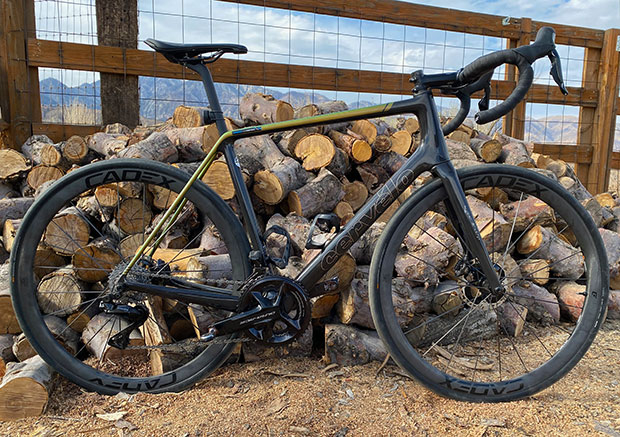
Beyond that, I wanted a bike that had a stem I could change. You math it out, which gets you to within a centimeter in every direction, but that’s all it gets you. Depending on the ergonomics of the hoods, the geometry of the handlebar, and so on, you might be off by 10mm fore, aft, up or down. I needed to know I could change the stem – the length, the pitch – if I wanted to. And that I could swap out handlebars. And, that I could do it without tons of hassle.
I needed a frame that not only fit, but that was a blend of new and old school. New school in that it’s very well made; the frame designer understood how to build it to handle well. Old school in that the hydraulic brake lines are buried inside the frame and fork, but not inside the stem. I could change the stem, and the handlebars – I changed both after the bike was built – and while you barely see the hoses they are not inside either the bar or stem. There is almost no frame I considered that didn't disqualify by this point.
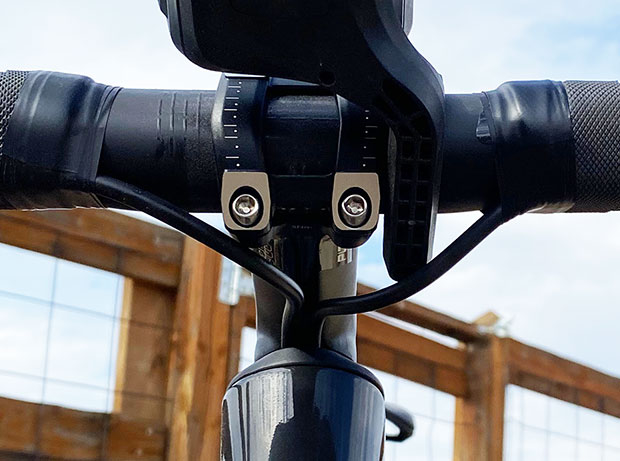
Next was gearing. If you build a bike for climbing and you don’t have a low enough gear, you’ve really defeated the purpose. I have Shimano’s new Dura Ace 9200 on this bike, and I don’t have the right gears…. yet. Right now the bike you see here has a 52×36 chain ring set and 11-30 on the back (12 speed). That would have been fine for me 15 years ago but not anymore. I do a lot of riding up grades of 20 percent and more, and what I’ll end up with is a 50×34 by 11-34 gearbox. I just have to wait until this is available. Shimano 9200 is very new. One thing you’ll find: if you put a lower gear on your bike, you’ll use it. Almost everyone – road or tri – could benefit from a lower gear on their bikes than they have.
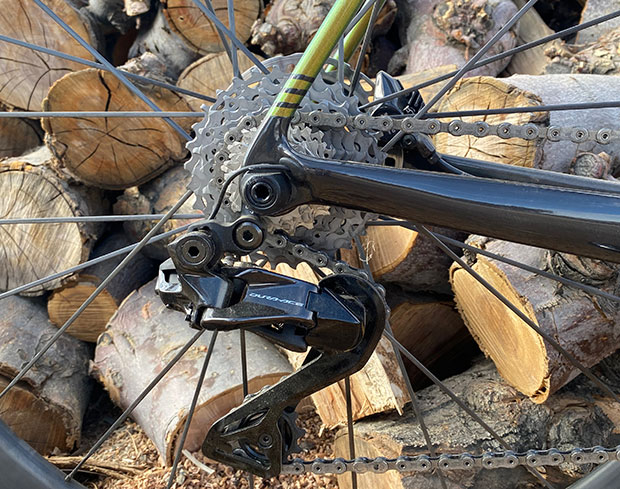
This is a bike for climbing, which means the road goes up. I ride a lot of long ascents that top out around 10,000 feet above sea level and that means hard freezes in the winter. Paved roads contract and expand in this weather and the asphalt pulls apart, leaving expansion cracks at regular intervals. Going up is not a problem, but coming down is like riding over railroad tracks. This makes 30mm or 32mm tires pretty desirable. The tires don’t have to be slow to be that big. (See the release just today of the Continental 5000 S TR, made in 4 sizes from 25mm to 32mm.) In this case I put CADEX’s 42mm wheels on the bike along with CADEX 32mm road tires. One value of having CADEX tires and wheels is that the fitment CADEX achieves with both its wheels and tires is remarkable (as I have written). Yes, there is 60ml of sealant in each wheel, but these tires on these wheels don’t leak down even 5psi over a week, and that is before any sealant is added.
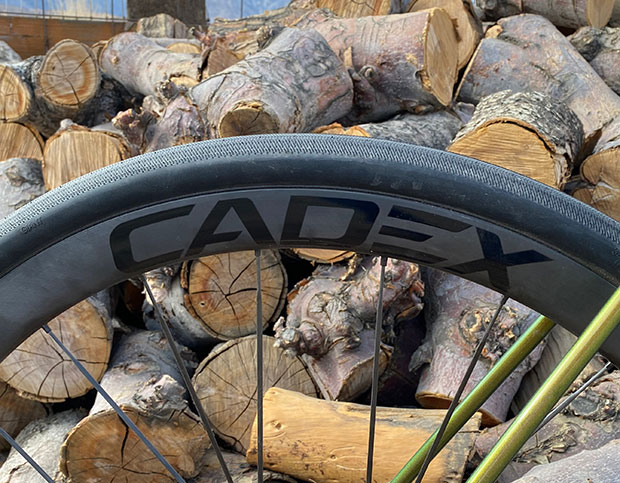
The wheels are part of this new paradigm of hookless beads, deep wells and wide inner bead widths. Road wheels are for me, for my use, unworthy of consideration unless the inner bead width is at least 20mm because I only ride fatter road tires. The wheels I’m riding these days for road are CADEX, Zipp and Shimano. The new Shimano wheels are 21mm of bead width and the others (like these CADEXs) are 22mm and 23mm.
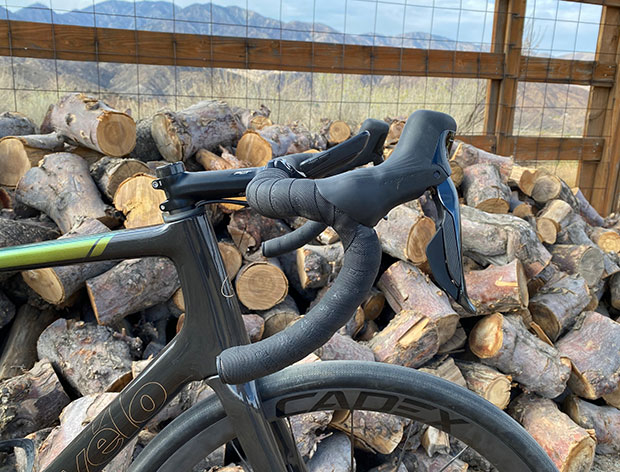
CADEX makes one other product class that is worthy of note: The road handlebar. The one weightweenie item on this bike (beside the frameset) is the handlebar. It’s 160 grams, and CADEX gets it down this low by a continuous carbon wrap of the whole bar rather than hooks bonded to tops (the standard way to make a road bar). Just about every road bar I own that is full carbon weighs in the 220g range. I’ve got my hoods angled in a little, because that’s a more ergonomic hand position when I’m out of the saddle.
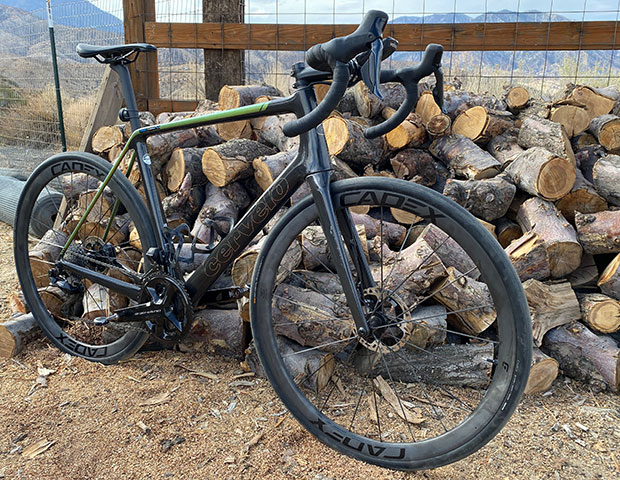
The pedals are a very standard stainless steel 53mm-spindle-length Wahoo Speedplay Zero. There are many areas where I just won’t sacrifice for weight and this is one. I had been riding 56mm and 59mm spindles (Speedplay gives you spindle options) but I’m back to 53mm because I don’t need them on this bike. I pedal kind of splay-footed – just like how I run – and the taper on some cranksets don’t allow me to pedal the way my feet are angled. Also, on some short chain stay frames my heel will hit the frame. Hence longer spindles, to allow me to pedal how I want, with the foot angle I choose. But this bike doesn’t have a short chain stay, and it may be my imagination but the new 9200 cranksets just seem have to have a good amount of taper from the pedal eye down to the bottom bracket. So, I’m back to 53mm spindles.
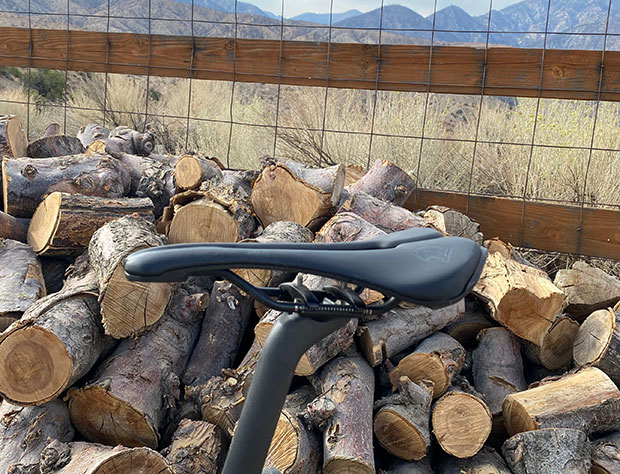
The saddle is a PRO, Shimano’s brand. I’m shocked I like this saddle. I didn’t think this was going to be a saddle brand for me, but I like it. I like my saddles with a curved – not a flat – top if I’m doing a lot of climbing on it, and PRO seems to have gotten it about right for me. I don’t like short road saddles. Every brand seems to want to copy the Specialized Power saddle and fine. Not my cup of tea. Short saddles are around 24cm in length, tip to tail, standard lengths are closer to 27cm, which is what this PRO saddle is.
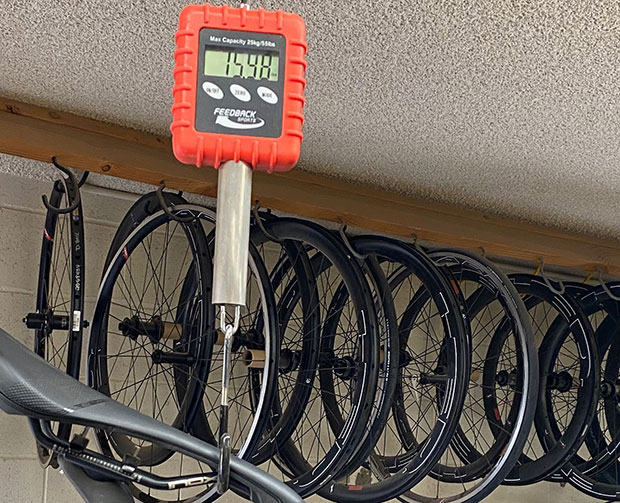
The bike, all in, with a Wahoo ELEMNT ROAM on its mount, and a rear Varia mount on the seat post, water bottle cages, sealant in the wheels, weighs in at 15.98 pounds. This is almost exactly how I’d ride it. The only items missing are the Garmin Varia in the mount; water bottles; and perhaps a bag with tools and whatnot. I have never owned a bike this light. The weight is mostly due to the frameset, at just a tick over 1000 grams frame and fork, with an assist from CADEX: lightweight wheels and handlebar.
This bike is a luxury for me. I expect I’ll ride this for a good many years. I'm far enough along in my cycling career it this bike – along with my Quintana Roo SRSix with a SRAM Force AXS groupset – may well be the last road bikes I ever buy.


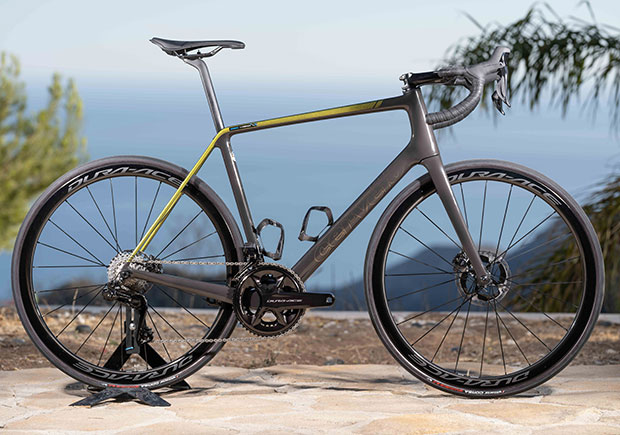
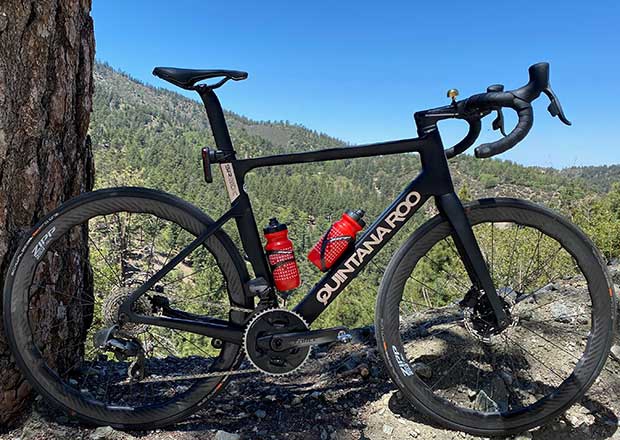
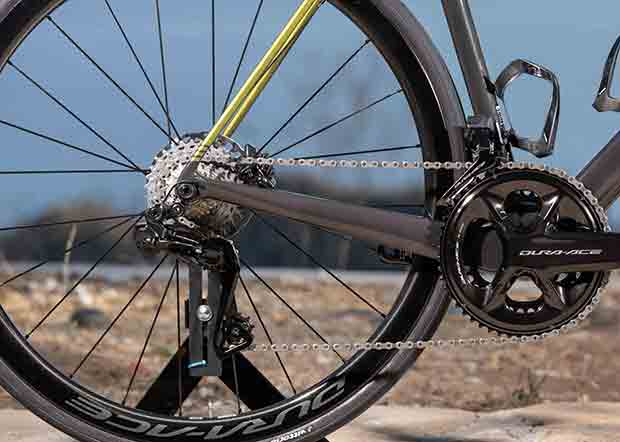
Start the discussion at slowtwitch.northend.network